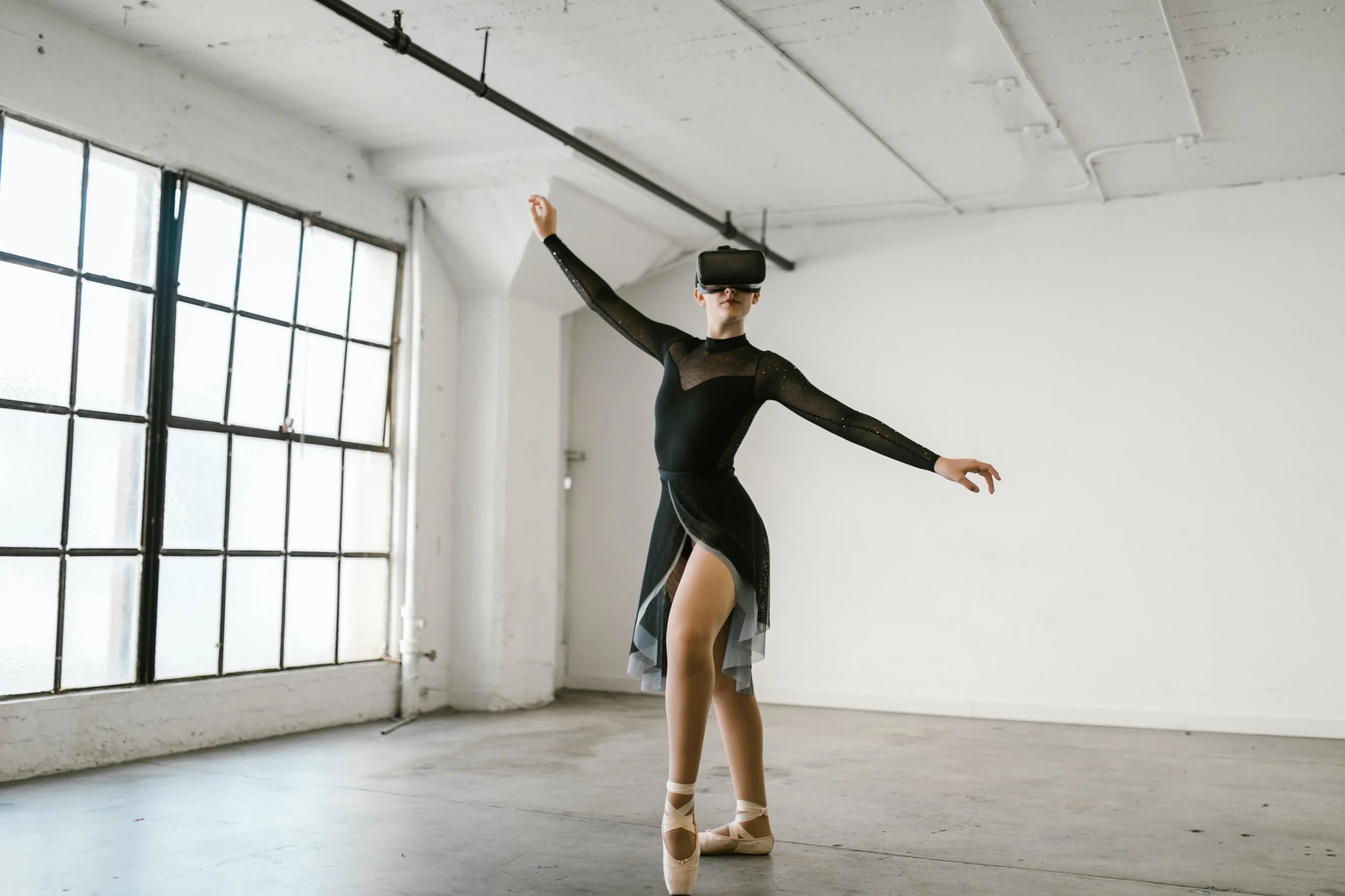This research was conducted by a Master of Entertainment Industry Management team. The purpose of this study is to examine how Gen Z, born between 1998 and 2010, appraises social media and interprets authenticity in branded content. Recognizing the significance of Gen Z’s influence, Ayzenberg Group, an advertising agency based in Southern California with a number of high-profile gaming clients, is interested in the role of authenticity as it relates to Gen Z's social media behavior and preference.
Chasing Waterfalls: An Early Case Where AI Writes and Performs in an Opera
The following case study analyzes an opera, Chasing Waterfalls. The opera, which premiered in Dresden, Germany on September 3, 2022, challenged traditional opera expectations by bringing a different way to integrate technology into the opera space. Chasing Waterfalls utilizes Artificial Intelligence (AI) software to write, compose, and perform its own aria live within the show.
Convergence and Innovation: Exploring How Blockchain is Shaping a New Era in the Korean K-pop Industry
Blockchain technology has began to permeate an essential aspect of South Korean culture, the K-pop business. South Korea's K-pop industry, famed for its distinct artistic expression and worldwide clout, is entering a new era of digital innovation. The K-pop industry, as represented by firms such as Modhaus, has begun to use blockchain technology, particularly non-fungible tokens (NFTs) and blockchain-based voting systems, to create new forms of engagement for fans as well as artists and music corporations.
What are the Impacts of Digital-Based Immersive and Interactive Art on Audiences?
Over the past decade, digital-based immersive and interactive art experiences have emerged as a popular trend in the art world. In the digital age, rapid technological advancements and continuous updates in digital equipment have revolutionized the art experience. This shift towards non-traditional, digital immersive, and interactive art forms has undoubtedly narrowed the gap between the audience and the art itself, offering a more intimate experience.
The Intersection of Equity & XR in Museums
XR is an exciting venture for museums for a variety of reasons ranging from stretching the limits of exhibition possibilities to expanding access and elevating the transfer of knowledge to an interactive, long-lasting experience. But how can museums thoughtfully incorporate XR into their programming, aligned with the sector’s increasing awareness and incorporation of equity goals?
How AI is Leading the Textile Industry to a New Lease on Life?
Artificial Intelligence (AI) has evolved from a concept in science fiction to an essential component of everyday life. With the AI software market expected to surpass well over $200 billion, its extensive impact is unmistakable. This article will delve into the deep relationship between AI and the textile industry, highlighting how AI is transforming this age-old craft in line with the sector’s rapid growth.
Leveling Up Together: Inclusive Marketing Strategies for a Diverse Gaming Community
Research by a Master of Entertainment Industry Management team examined the current gaming landscape, allowing their video game marketing client, Cheat Code (a division of Omelet) to develop effective strategies that resonate with the diverse audience of midcore and hardcore games. They found that Diversity, Equity, and Inclusion (DEI) initiatives incorporated by a gaming company can increase players' willingness to participate in the communities.
In What Ways is AI Disrupting the Dance Industry?
Horizon 2028 Part 2: Audience and Industry Interview Perspectives
Horizon 2028 Part 1: The Future of Global Content Licensing
This report considers content and distribution strategies that allow Paramount Global Content Distribution (PGCD) to maximize subscriber growth and external licensing revenue. Given the symbiotic nature of licensing deals among studios, the research team focused on how PGCD can remain competitive in the streaming landscape with a balanced mixture of internally and externally licensed properties.
AI-Generated Images: Can We Even Trust Photography Anymore?
AI as a Support for Curatorial Practice in Museums
The merging of artificial intelligence (AI), big data, and human cognitive systems has catalyzed a profound digital transformation of our lifestyles and production methods. This shift is particularly noticeable in the art field, where the integration of AI has sparked innovative ideas and prompted new assessments of traditional practices. Art museums are investigating the potential of AI in collection management, improving visitor experiences, and ticketing attendance data. Of these, the field of art curation is one that is undergoing an evolution.
Evolving Applications of AI and VR in Art Conservation, Preservation, and Reconstruction
The field of art conservation has long been a community of highly specialized and skilled professionals, often whom have dedicated hundreds of hours to understanding meticulous processes and materials. They are entrusted by institutions and the public to preserve and protect pieces of culture and history- works which often occupy fragile and delicate states for the remainder of their existence. Many of these pieces have lived long periods of time, having witnessed conflict, cultural changes, and geopolitical events over the course of history.
Museum Computer Network 2023 Conference Takeaways
Staff Researcher, Venetia Liao, attended the 2023 Museum Computer Network Conference (MCN), and wrote about her four key takeaways: (1) Audience Engagement & Visitor Experience In Apps, Websites, Research, and Design, (2) AI, VR/XR/AR Usage & Concerns, (3) Data & Database Management For Collections Management & Marketing Strategy, and (4) Cybersecurity.
U.S. Copyright Office Ruling and Implications on A.I.
Generative AI in an art context raises a multitude of legal questions, one of the more important ones being, who owns the art? Is it the AI-tech company? The person who inputs the prompts? Some mysterious third party? More specifically, with the U.S. Copyright Office declaring that AI cannot be credited as an author on a piece of art, how does this change the legal landscape for the AI-curious and artists who already use AI as part of their creative process?
Exploring the Feasibility of AI Music Therapy
A Case for Incorporating Sign Language Recognition Technologies into Theatre Performance
While researchers are working to develop sign language recognition technologies, there are no commercially available sign language recognition technologies (yet). As performing arts seeks to become a more inclusive and diverse space, one area that we can work to be more inclusive is with our language, by making our spaces accessible to those who speak many languages, even non-spoken ones.
Engaging the Next Generation Audience for the Legacy Music Artist: Les Paul Case Study
The following research was designed to gain an understanding of the legacy artist to further develop the Les Paul brand and increase recognition surrounding his name. The research team examined strategies for re-introducing Paul in an over-saturated media climate to younger generations through both quantitative and qualitative analysis.
Strategies in the Streaming Industry: Bally Sports as Case Study
This case study for Bally Sports shows that sports fans’ top priority for streaming is accessible, reliable, and interesting content. As a result of these findings, the recommendations to maintain longevity in the streaming industry focus on the importance of brand awareness, user experience, representative content, and potential partnership integrations.
Prototyping Case Study: A Sprint Journey to a Website for Sharing Resources
Prototyping is an essential part of beta-testing any digital tool. The following processed involved a period of stakeholder interviews that informed an Agile-based sprint process for prototyping an interactive resource-sharing website. This process was fast and effective to get multi-user feedback and a final prototype in an overall 8 weeks with a final 2 week-long sprints.























